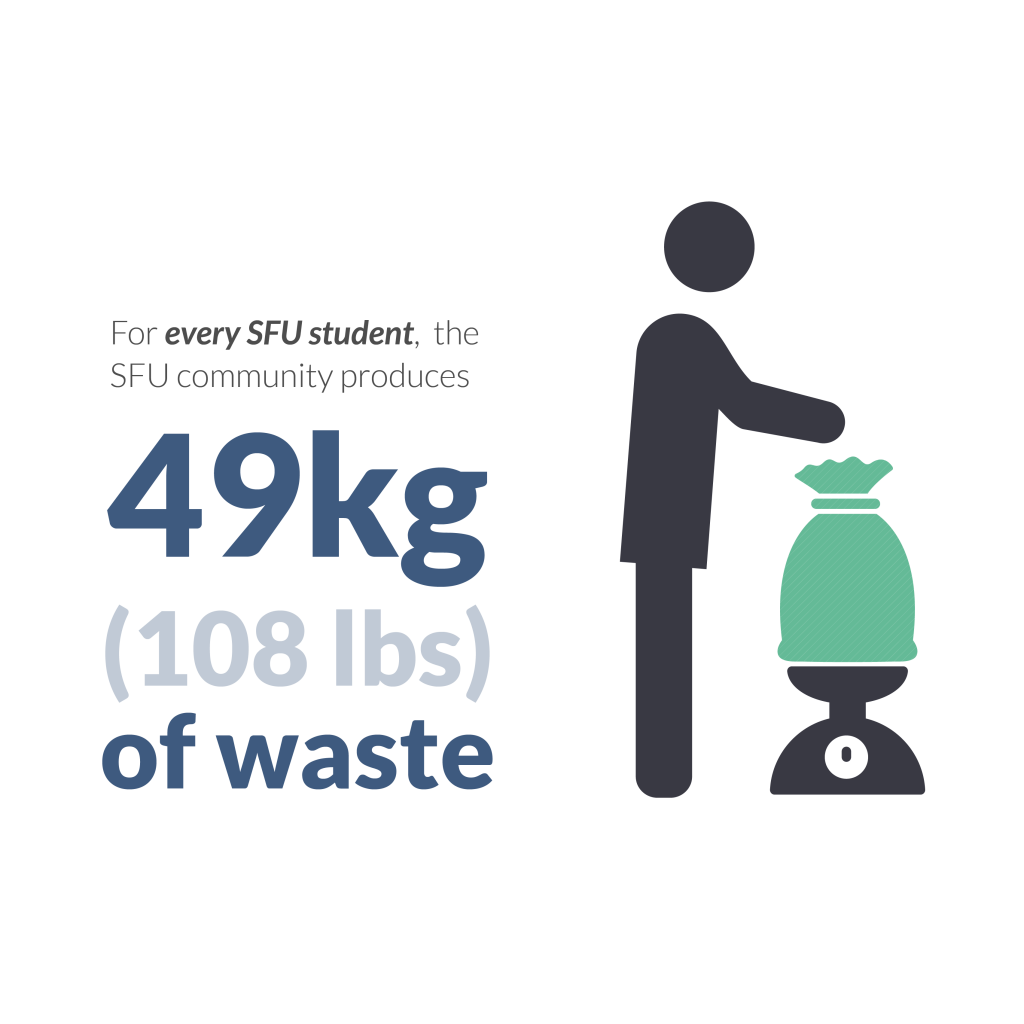Total amount of waste generated per student
When we talk about waste, it’s often in numbers so large it’s hard to imagine how we, as an individual, can make a difference. However, if we instead consider how much waste we produce per person, things start to look more manageable. At SFU, that number is 49 kg*: For every SFU student, the SFU community produces 49 kg (108lb) of waste.
*This number is based on the student full-time equivalency for the 2014/15 year, which is provided by SFU’s Institutional Research and Planning. This data is operational waste only and does not include construction or demolition waste.

Diversion of waste from the landfill
As part of the SFU Sustainability Strategic Plan (2013-2016), the University set a goal to reduce the amount of waste going to landfill by diverting 70 percent of its waste into composting or recycling. We are pleased to say that we achieved that goal and diverted 75 percent of total waste from landfill in 2014/15. However there is still a need for continued efforts.
When it comes to operational waste (total waste minus demolition and construction waste). We achieved a 41.6 percent diversion rate. There is plenty of room for more of SFU’s day-to-day waste to be diverted to the correct recycling, reuse or composting streams. We are well on the way to exceeding 50 percent diversion of operational waste for the 2015/16 year, but it will rely on the efforts of the entire SFU community.
Where our waste goes
In 2014/15, we diverted 41.6 percent of our operational waste from the landfill. Operational waste includes garbage, fibre, cardboard, wood, mixed glass, plastic and tin, organics, metal, drywall, e-waste and other one-off disposal items, such as lightbulbs and batteries.

![]()
Energy & Emissions
More Information![]()
Mobility & Travel
More Information![]()
Consumption & Waste
Currently Viewing![]()
Learning & Discovery
More Information![]()
Society & Equity
More Information![]()